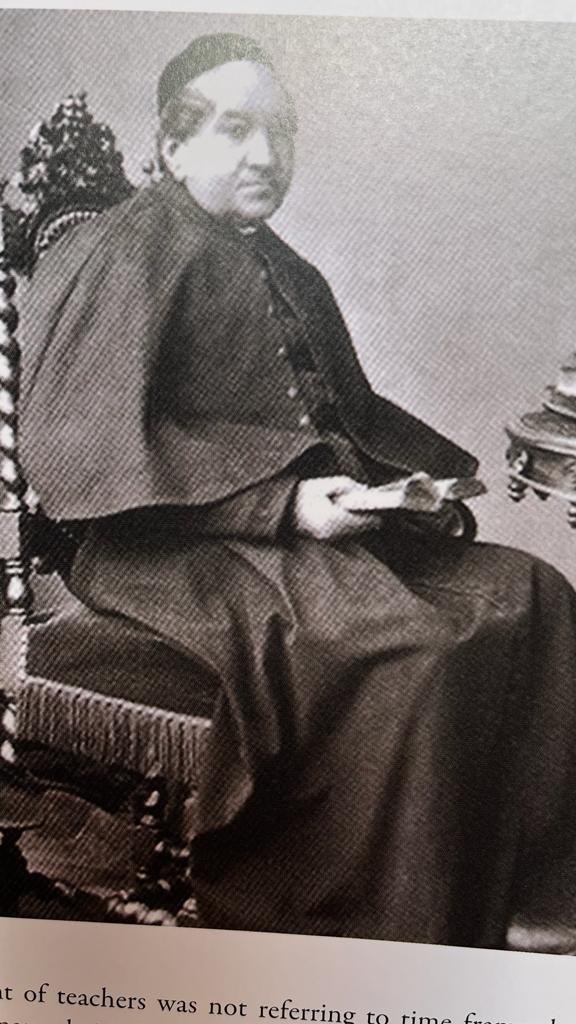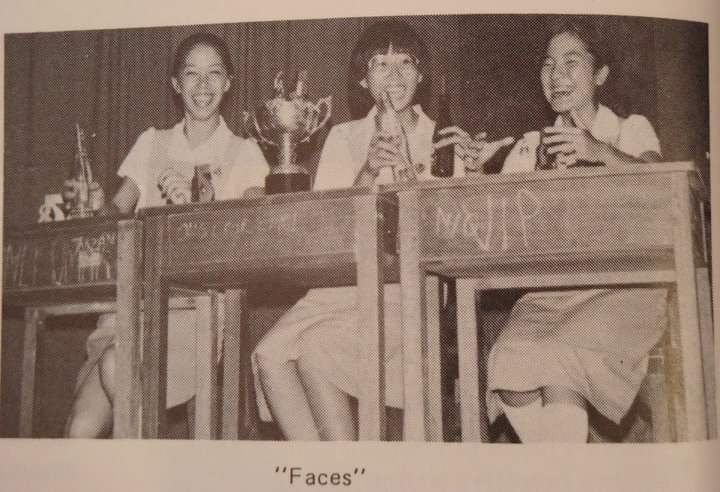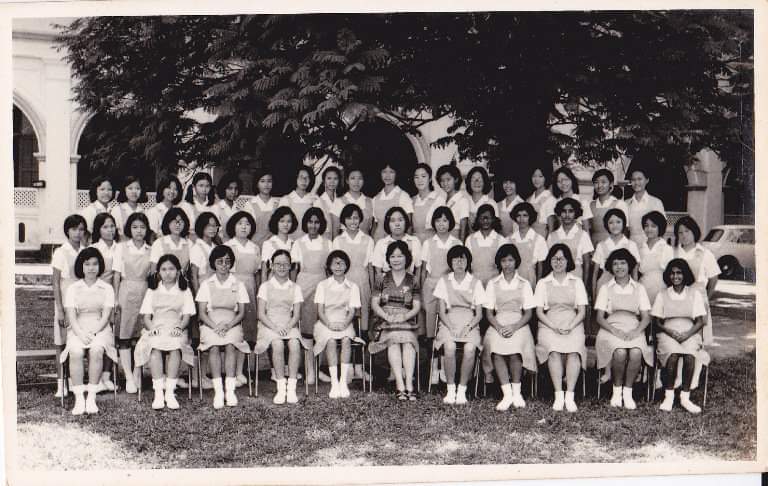

By Chan Kok Keong
EVERYWHERE, EVERYTHING ABOUT CONVENTS ONCE
Convent schools dot the landscape of our major cities and towns. Fifty six at the last count but the number still functioning is probably on the decline. Just recently, two have closed shop, in a manner of speaking. Goodbye to the Convent Light Street and the Pulau Tikus Convent. Both schools in Penang where the English language first found its way here in 1786 with the arrival of Francis Light.
Michelle Yeoh, winner of the Oscar for best actress studied at the Main Convent, Ipoh. In 1977, she was in Form 3. It was founded in 1907.
This was the mother school which spawned other Convents in Ipoh such as the Marian Convent, Tarcisian Convent and the Ave Maria Convent. Hence the name Main Convent.
How did the Convent schools come to Malaysia?
WE WANT NUNS!
Not many are familiar with the name of Father Jean Marie Beurel. This great man must be given the greatest credit for bringing the Convents and the La Salle Brothers to Penang and Singapore and then to the rest of Asia.
He started the ball rolling by corresponding with the religious in his homeland France. His letter to Mother Superior de Foudas, Head of the convent in France reads “We want schools… We want Nuns. Will you give me some?” Similarly, he also wrote to the Superior General of the La Salle Brothers imploring “I hope that through the grace of god I shall have the ineffable consolation of seeing before my death the Brothers on the soil of Malaya,”
Whereas the first La Salle school was established in France in 1680, the first Convent school was even earlier in time. The Sisters of St Maur had under the inspiration of Father Barre set up a girls school in 1662!
Being the parish priest at the Good Shepherd Cathedral in Singapore,p Father Beurel foresaw as early as 1840 the need for the expansion of educational opportunities in this part of the world. His foresight was nothing short of amazing as the success of the La Salle schools and Convents today is only too well known.
FATHER BEUREL AND HIS CAUSE
Father Beurel not only wrote earnest letters to the Heads of La Salle and Convent of the Holy Infant Jesus to bring their schools to Singapore and thence to other parts of Malaya but made long sea journeys back to Paris in order to convince them of his cause. To achieve this, he had to argue his cause to the Bishop and all those who had the authority to send the Nuns and Brothers to Asia. This included negotiating contract terms, finding suitable housing and also in the process incurring huge financial risks!
He even took to going into business himself so that there will be funds to finance his dream of establishing schools in Asia. For example, he went into a joint venture and acquired land for the purpose of a nutmeg plantation, He truly appreciated the important location of Singapore and was of the view that if the schools flourished in Singapore, they would also be emulated in the neighbouring countries.


FATHER BEUREL’S CALL IS ANSWERED
The answer to Father Beurel’s call came in 1852 with the arrival of the La Salle Brothers and four Nuns on board the sailing ship “La Julie”. It was not without trials and tribulations. Mother St Paulin died during the journey and was buried at sea. On arrival in Singapore, one of the Nuns abandoned the cause and another one, who was critically injured during the sea voyage suffered acute brain fever and died not long after. The congregation was then left with only two Sisters to fulfil their sacred mission.
Undeterred, Mother Superior in Paris identified and chose one Mother St Mathilde as the right candidate to lead a second mission. Born Justine Raclot, she was determined from an early age not only to be a religious but as one who would serve in the tropics. Upon hearing that their Congregation would be sending a second mission to fortify the Sisters in Singapore, she trained herself to adapt to the hot weather by sleeping in blankets with windows closed in the Summer. Such was her resolve and earnestness to serve in Asia, a land unknown and unfamiliar to a French girl.
MOTHER ST MATHILDE WAS A SUCCESS
Much headway was made when Mother St Mathilde arrived in Penang together with three other Sisters. Sister St Damien was appointed the new Superior. Mother St Mathilde then made her way to Singapore arriving there on 5 February 1854. Once again Father Beurel was on hand to welcome the Sisters as he had welcomed their earlier confreres.
Mother St Mathilda was a phenomenal success. Within a century of her arrival, there would be scores of Convents all over Singapore and then Malaya. Unlike the La Salle schools which were dedicated only to the cause of education, the Sisters of St Maur (as the Convent of the Holy Infant Jesus sisters were also known as ) also had under their care orphans and distressed girls. And all who were poor and destitute, sick and dying regardless of their religion found a solace and consolation by the Nuns in the Convents.
SPIRIT AND SACRIFICE
Today the character and atmosphere of the Convent schools have changed drastically due to post-Merdeka educational policies. There are no longer any Nuns teaching in any of the convents of the Holy Infant Jesus. Mother Superior has no right to hire and fire the teachers. The orphanages closed down long before they surrendered the schools. In a word, the Sisters of the convent have lost control of the schools !
Alas! Today only very, very little if any at all is left of the spirit which moved Sir Roland Bradell to write a hundred years ago upon entering the cloisters of the Convent:
“…a feeling of security and peace will descend upon you, with a vast respect for the courage and self-sacrifice of the quiet nuns, of whom only a very, very few have ever returned to their beautiful France. In the Convent, unwanted babies of all races are left and cared for; there you will find little girls of every nationality educated and splendidly educated…what a tremendous debt Singapore owes to the little ladies of the Convent.”
In addition to the French and other foreign nuns, one must also remember the local ones, all of whom without exception, have retired form teaching. For all the Nuns who lived out their entire lives to educate the youth of Asia, their calling is captured in the immortalised words of Stephen Grellet :
” I expect to pass through this world but once; any good thing therefore I can do, or any kindness I can show, let me do it now for I shall not pass this way again…”
What Sir Roland Braddell, third generation Attorney – General of Malaya failed to point out was that the Convent in its early days also accepted boys!
David Marshall, the first Chief Minister of Singapore studied at the Convent and so did Leslie Charteris, the popular author of Simon Templar fame. In Perak, Dato Seri Liew Whye Hone once President of Ipoh Municipal Council was also a Convent Boy!


CONVENT GIRL WINS OSCAR
On receiving the Oscar for best actress, Michelle Yeoh paid a warm tribute to her mother. She also addressed the younger generation by urging them to persevere and she asked the seniors never to be discouraged. Her theme was “never give up” Persistence indeed was her strength.
Her family and friends in Ipoh, her hometown, equally rejoiced. Numerous must have been the friends and relatives who clamoured to show off pictures taken of themselves with Michelle.
Michelle’s old classmates from her schooling days in the Main Convent probably dusted off the old class photos or rummaged through the tattered school magazines to have a good look at their famous classmate. In case of doubt, they would ascertain that it was really her standing at the back row because her name is below the photo; Yeoh Choo Keng (as she was known in school).
CONVENT UPBRINGING AND SPEAKING ENGLISH
Michelle Yeoh’s success came after many forays in Hong Kong where the language medium was not English. Did the strong English speaking environment of her alma mater the Main Convent play a part in grooming her for success in the Western film industry? Would she have won the Oscar if she had gone to a non – English medium school in Ipoh?
Undeniably, the ethos and culture of the school may also have played a part. Drama, debates, games and singing; these are activities which shape and mould the character of the young in any school. Is there something extra in a Convent experience? As the title of a book written by ex convent girls in England suggested “There’s something about a Convent girl”!
The Duke of Wellington said that the Battle of Waterloo was won on the playing fields of Eton. That may or may not be true. George Orwell who did not have a happy time in Eton said although that may be so, they lost all subsequent battles! But Orwell did not have a happy time at Eton.
Can Yeoh Choo Keng attribute her winning the Oscar to the opportunities which the Nuns provided her in the cloisters of the Main Convent? Maybe, maybe not. Many other factors have been instrumental to her success and the convent education is but one out of many. Nonetheless, it would have been an education second to none(Nun)!
Interestingly, what if Father Beurel had not asked the Nuns and the Brothers to come to Asia?
CHANGED, CHANGED UTTERLY
No matter today that the crosses have been removed, the statues disappeared and chapels dismantled. These are tangible objects and are replaceable. The irreplaceable loss are Values, Character and the chance of a balanced Spiritual education.
Education has been taken for granted for too long and the huge sacrifices of so many are so easily forgotten. How apt the words of WB Yeats that:
“Too long a sacrifice
Can make a stone of the heart
O when may it suffice ?
That is heaven’s part… ”
The Nuns and the Brothers established great schools which produced many fine citizens for our country in the days of its birth pangs. Do we need to be reminded that education policies cannot and should not be chopped and changed every now and then?
Francis Brown who wrote a beautiful book in 1997 recording the history and contribution of the La Salle Brothers concluded: “the schools cannot be effectual without stability and order; nor can the democratic state survive without the nourishment that a wise education affords to each new generation.”




